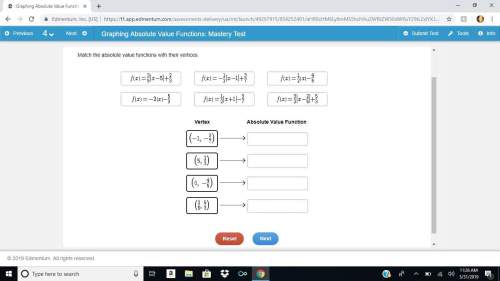
Mathematics, 06.06.2020 23:57 leo4687
(Moment-generating functions) Distributions may in general be skewed, but there may be conditions on their parameters that make the skewness get smaller or even disappear. This problem uses moment-generating functions (MGFs) to explore that idea for two important discrete distributions, the Binomial and the Poisson. (a) We saw in class that if X ~ Binomial(n, p), for 0 < p < 1 and integer n > 1, then the MGF of X is given by ºx(t) = [pe' + (1 – p)]". for all real t, and we used this to work out the first three moments of X (note that the expression for E (X3) is only correct for n > 3): E(X) = np, E(x^) = n p[(1+(n – 10p] , E (X3) = n p[1 + (n − 2)(n − 1)p² +3 (n − 1)p), from which we also found that V(X) = np(1 - p). Show that the above facts imply that 1-2 p skewness(X) = - Vnp(1 - p) Under what condition on p, if any, does the skewness vanish? Under what condition on n, if any, does the skewness tend to 0? Explain briefly. (b) In our brief discussion of stochastic processes we encountered the Poisson distribution: if Y ~ Poisson (1), for > 0, then the PMF of Y is for y=0,1,... otherwise (10) (i) Use this to show that for all real t the MGF of Y is Vy(t) = e^(et-1). (ii) Use vy(t) to compute the first three moments of Y, the variance of Y and the skewness of Y. Under what condition on 1, if any, does the skewness either disappear or tend to 0? Explain briefly.

Answers: 3


Another question on Mathematics

Mathematics, 21.06.2019 14:00
Assume that a population of 50 individuals has the following numbers of genotypes for a gene with two alleles, b and b: bb = 30, bb = 10, and bb = 10. calculate the frequencies of the two alleles in the population’s gene pool.
Answers: 2

Mathematics, 21.06.2019 16:50
The rate of decay of a radioactive substance depends upon the amount present initially. the mass y (mg) of the radioactive substance cobalt-60 present in a sample at time t (years) is represented by the exponential equation y=50e −0.1315 t . answer the following questions in complete sentences. 1. how does the exponential equation above compare to the equation for simple interest that is compounded continuously? explain the similarities. 2. what is the initial amount of cobalt-60 in the sample? 2. how much cobalt-60 is left after 8.4 years? show your work. 3. what would be the y-intercept of the graph? what does it represent? 4. after how many years will the amount of cobalt-60 left be 6.25 mg? explain what happens to the cobalt-60 after 50 years? 5. discuss some “real-world” examples and uses of cobalt-60
Answers: 1

Mathematics, 21.06.2019 18:00
Name each raycalculation tip: in ray "ab", a is the endpoint of the ray.
Answers: 1

Mathematics, 21.06.2019 22:00
1) prove that 731^3−631^3 is divisible by 100 2) prove that 99^3−74^3 is divisible by 25
Answers: 2
You know the right answer?
(Moment-generating functions) Distributions may in general be skewed, but there may be conditions on...
Questions


History, 18.10.2019 21:00


Business, 18.10.2019 21:00

History, 18.10.2019 21:00


English, 18.10.2019 21:00

Health, 18.10.2019 21:00


History, 18.10.2019 21:00

Spanish, 18.10.2019 21:00

English, 18.10.2019 21:00

Geography, 18.10.2019 21:00



Mathematics, 18.10.2019 21:00

English, 18.10.2019 21:00

English, 18.10.2019 21:00

English, 18.10.2019 21:00





